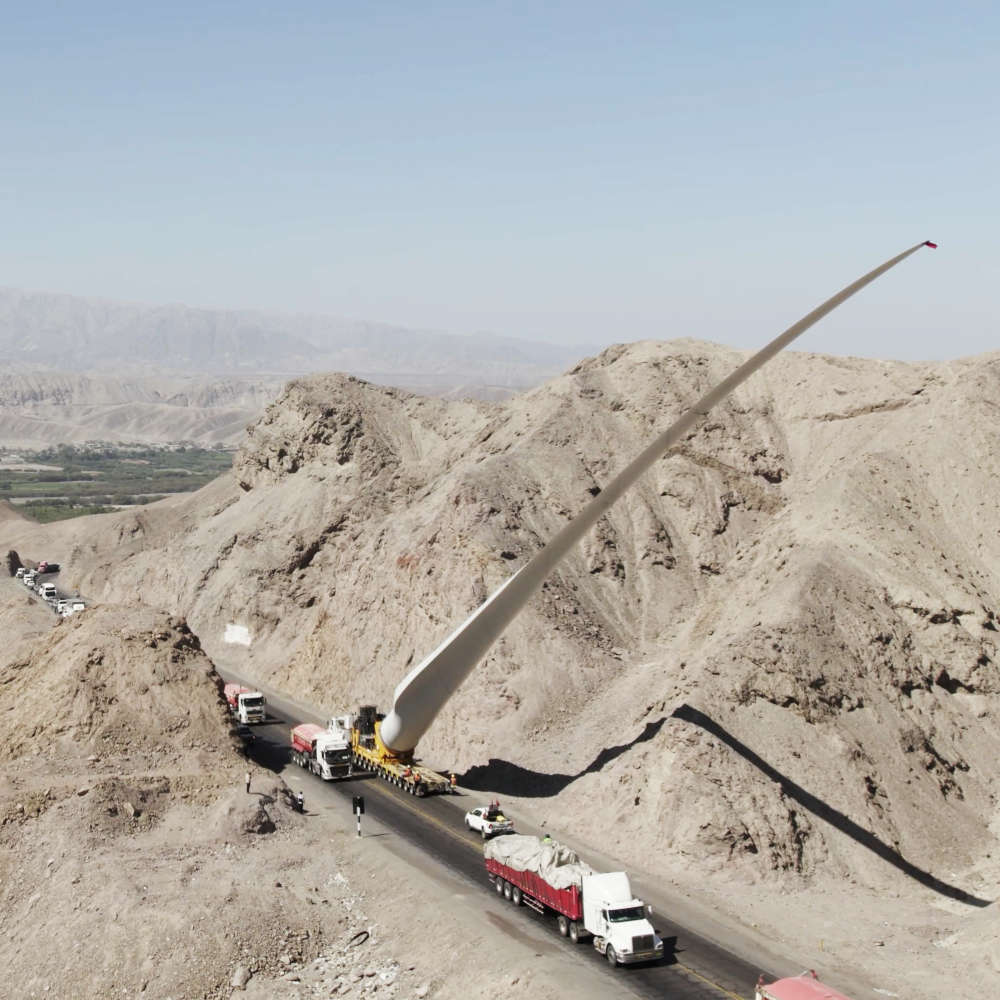On a road trip, you’ve likely seen a long trailer carrying an enormous wind turbine blade. And you might have wondered how such a large component reaches the top of a mountain and is installed dozens of meters high. Until now, this challenge has been met with significant logistical efforts and, at times, by altering access roads, which are often steep and winding. Think about the difficulty of moving a large cabinet up a narrow staircase to get an idea. Fortunately, the advent of blade lifter technology has made it possible to develop projects previously deemed unfeasible due to their inaccessible locations.
This article covers the following topics:
Do you like what you see? Download the PDF here
The challenge of transporting a blade
In the mid-2010s, wind turbine blades, made from a mix of fiberglass, carbon fiber, wood, and aluminum, already weighed up to seven tons and measured forty meters in length. However, these impressive figures are now overshadowed by today’s standards. As wind turbines increase in power and efficiency, their blades grow exponentially. It’s now common to see blades twice as long. While helicopters were once used for short-distance transport, road transport has become the only viable option.
Although part of the journey can be managed by maritime transport or by placing factories near wind farms, large trucks with extendable trailers are indispensable for the final stretches. Bridges, roundabouts, and intersections along the route must be considered. When navigating uphill curves on mountain roads, sometimes the road surface itself needs to be extended.

Blade lifter technology takes over
This challenge has led to the development of blade lifter technology, which features a blade-lifting mechanism installed on trailers. The blade is secured to a hydraulic system that can adjust its orientation up to about 65 degrees, and some models can reach 90 degrees. This allows the blade to avoid obstacles and reduces the need for large trailers. Additionally, the platform where each blade is mounted can, in some cases, rotate 180 degrees to counteract wind gusts. Some models can lift up to 1,000 metric tons.
The first tests of this system were conducted in 2012 for a wind farm installation in Switzerland. Its adoption has been relatively slow, with countries like Spain not using it until 2019. However, it is now a mature technology gaining traction with impressive use cases. What drives this success? Among its main advantages, besides improved transport mobility, are:
- It facilitates the installation of wind farms in previously inaccessible locations, expanding the range of renewable projects.
- It reduces costs associated with civil engineering works, as major road modifications are unnecessary.
- It minimizes environmental impact by preserving existing vegetation and reducing earthworks.
The case of the MacIntyre wind farm
ACCIONA Energía is pioneering this system in countries like Australia. At the MacIntyre wind farm, they demonstrated its effectiveness in one of the largest installations in the southern hemisphere. By utilizing existing roads, they reduced the required earthworks by 250,000 cubic meters. Moreover, because the surrounding land remained undisturbed, the impact on vegetation was minimized by 20,000 square meters—equivalent to three times the size of Manchester United’s stadium in the UK.
Overall, wind energy is becoming more efficient. This is partly due to the increasing size of wind turbines and the focus on offshore wind farms, but also thanks to advancements in manufacturing and transport systems. If you’re interested in learning about the lifecycle and recycling of a blade, we recommend reading this article on how a blade can be reincarnated as a sneaker.
Source:



